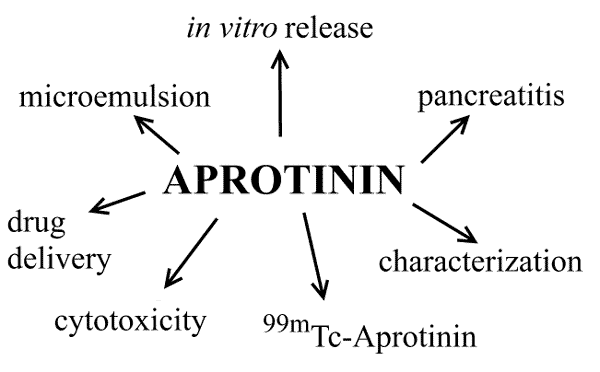Abstract
The object of the current study was to prepare novel microemulsion formulations of aprotinin for parenteral delivery and to compare in vitro characteristics and release behaviour of different Technetium-99m (99mTc)-Aprotinin loaded microemulsion formulations. In addition, cytotoxicity of microemulsion formulation was evaluated with cell culture studies on human immortalized pancreatic duct epithelial-like cells. For this aim, firstly, pseudo-ternary phase diagrams were plotted to detect the formulation region and optimal microemulsions were characterized for their thermodynamic stability, conductivity, particle size, zeta potential, viscosity, pH and in vitro release properties. For in vitro release studies aprotinin was labelled with 99mTc and labelling efficiency, radiochemical purity and stability of the radiolabeled complex were determined by several chromatography techniques. Radiolabeling efficiency of 99mTc-Aprotinin was found over than 90% without any significant changes up to 6 hours after labelling at room temperature. After that, in vitro release studies of 99mTc-Aprotinin loaded microemulsions were performed with two different methods; dissolution from diffusion cells and dialysis bags. Both methods showed that release rate of 99mTc- Aprotinin from microemulsion could be controlled by microemulsion formulations. Drug release from the optimized microemulsion formulations was found lower compared to drug solution at the end of six hours. According to stability studies, the optimized formulation was found to be stable over a period of 12 months. Also, human immortalized pancreatic duct epithelial-like cells were used to evaluate the cytotoxicity of optimum formulation. Developed microemulsion did not reveal cytotoxicity. In conclusion the present study indicated that the M1-APT microemulsion is appropriate for intravenous application of aprotinin.
Keywords: Aprotinin, cytotoxicity, in vitro release, microemulsion, pancreatitis, 99mTc-Aprotinin.
































